1-Methyl-1H-indole-3-carbaldehyde
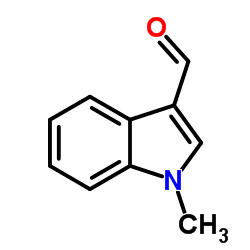
1-Methyl-1H-indole-3-carbaldehyde structure
|
Common Name | 1-Methyl-1H-indole-3-carbaldehyde | ||
|---|---|---|---|---|
| CAS Number | 19012-03-4 | Molecular Weight | 159.185 | |
| Density | 1.1±0.1 g/cm3 | Boiling Point | 318.7±15.0 °C at 760 mmHg | |
| Molecular Formula | C10H9NO | Melting Point | 70-72 °C(lit.) | |
| MSDS | USA | Flash Point | 146.5±20.4 °C | |
| Symbol |

GHS07 |
Signal Word | Warning | |
| Name | 1-methylindole-3-carbaldehyde |
|---|---|
| Synonym | More Synonyms |
| Density | 1.1±0.1 g/cm3 |
|---|---|
| Boiling Point | 318.7±15.0 °C at 760 mmHg |
| Melting Point | 70-72 °C(lit.) |
| Molecular Formula | C10H9NO |
| Molecular Weight | 159.185 |
| Flash Point | 146.5±20.4 °C |
| Exact Mass | 159.068420 |
| PSA | 22.00000 |
| LogP | 1.96 |
| Vapour Pressure | 0.0±0.7 mmHg at 25°C |
| Index of Refraction | 1.585 |
Synonym: Section 2 - COMPOSITION, INFORMATION ON INGREDIENTS
Risk Phrases: 36/37/38 Section 3 - HAZARDS IDENTIFICATION EMERGENCY OVERVIEW
Irritating to eyes, respiratory system and skin. Potential Health Effects Eye: Causes eye irritation. Skin: Causes skin irritation. Ingestion: May cause irritation of the digestive tract. The toxicological properties of this substance have not been fully investigated. Inhalation: Causes respiratory tract irritation. Chronic: Not available. Section 4 - FIRST AID MEASURES Eyes: Flush eyes with plenty of water for at least 15 minutes, occasionally lifting the upper and lower eyelids. Get medical aid. Skin: Get medical aid. Flush skin with plenty of water for at least 15 minutes while removing contaminated clothing and shoes. Ingestion: Get medical aid. Wash mouth out with water. Inhalation: Remove from exposure and move to fresh air immediately. If not breathing, give artificial respiration. If breathing is difficult, give oxygen. Get medical aid. Notes to Physician: Section 5 - FIRE FIGHTING MEASURES General Information: As in any fire, wear a self-contained breathing apparatus in pressure-demand, MSHA/NIOSH (approved or equivalent), and full protective gear. Extinguishing Media: Use water spray, dry chemical, carbon dioxide, or chemical foam. Section 6 - ACCIDENTAL RELEASE MEASURES General Information: Use proper personal protective equipment as indicated in Section 8. Spills/Leaks: Vacuum or sweep up material and place into a suitable disposal container. Section 7 - HANDLING and STORAGE Handling: Avoid breathing dust, vapor, mist, or gas. Avoid contact with skin and eyes. Storage: Store in a cool, dry place. Store in a tightly closed container. Section 8 - EXPOSURE CONTROLS, PERSONAL PROTECTION Engineering Controls: Use adequate ventilation to keep airborne concentrations low. Exposure Limits CAS# 19012-03-4: Personal Protective Equipment Eyes: Not available. Skin: Wear appropriate protective gloves to prevent skin exposure. Clothing: Wear appropriate protective clothing to prevent skin exposure. Respirators: Follow the OSHA respirator regulations found in 29 CFR 1910.134 or European Standard EN 149. Use a NIOSH/MSHA or European Standard EN 149 approved respirator if exposure limits are exceeded or if irritation or other symptoms are experienced. Section 9 - PHYSICAL AND CHEMICAL PROPERTIES Physical State: Solid Color: Light yellow to orange cryst. powder and chunks Odor: odorless pH: Not available. Vapor Pressure: Not available. Viscosity: Not available. Boiling Point: Not available. Freezing/Melting Point: 70 - 72 deg C Autoignition Temperature: Not available. Flash Point: Not available. Explosion Limits, lower: Not available. Explosion Limits, upper: Not available. Decomposition Temperature: Solubility in water: soluble in acetone, diethyl ester Specific Gravity/Density: Molecular Formula: Molecular Weight: Section 10 - STABILITY AND REACTIVITY Chemical Stability: Stable under normal temperatures and pressures. Conditions to Avoid: Incompatible materials, exposure to moist air or water. Incompatibilities with Other Materials: Strong oxidizing agents, strong bases. Hazardous Decomposition Products: Carbon monoxide, oxides of nitrogen, carbon dioxide. Hazardous Polymerization: Has not been reported Section 11 - TOXICOLOGICAL INFORMATION RTECS#: CAS# 19012-03-4 unlisted. LD50/LC50: Not available. Carcinogenicity: 1-Methylindole-3-carboxaldehyde - Not listed by ACGIH, IARC, or NTP. Section 12 - ECOLOGICAL INFORMATION Section 13 - DISPOSAL CONSIDERATIONS Dispose of in a manner consistent with federal, state, and local regulations. Section 14 - TRANSPORT INFORMATION IATA Not regulated as a hazardous material. IMO Not regulated as a hazardous material. RID/ADR Not regulated as a hazardous material. Section 15 - REGULATORY INFORMATION European/International Regulations European Labeling in Accordance with EC Directives Hazard Symbols: XI Risk Phrases: R 36/37/38 Irritating to eyes, respiratory system and skin. Safety Phrases: S 26 In case of contact with eyes, rinse immediately with plenty of water and seek medical advice. S 37/39 Wear suitable gloves and eye/face protection. WGK (Water Danger/Protection) CAS# 19012-03-4: No information available. Canada None of the chemicals in this product are listed on the DSL/NDSL list. CAS# 19012-03-4 is not listed on Canada's Ingredient Disclosure List. US FEDERAL TSCA CAS# 19012-03-4 is not listed on the TSCA inventory. It is for research and development use only. SECTION 16 - ADDITIONAL INFORMATION N/A |
| Symbol |

GHS07 |
|---|---|
| Signal Word | Warning |
| Hazard Statements | H315-H319-H335 |
| Precautionary Statements | P261-P305 + P351 + P338 |
| Personal Protective Equipment | dust mask type N95 (US);Eyeshields;Gloves |
| Hazard Codes | Xi:Irritant; |
| Risk Phrases | R36/37/38 |
| Safety Phrases | S26-S37/39 |
| RIDADR | NONH for all modes of transport |
| WGK Germany | 3 |
| HS Code | 2933990090 |
| Precursor 9 | |
|---|---|
| DownStream 10 | |
| HS Code | 2933990090 |
|---|---|
| Summary | 2933990090. heterocyclic compounds with nitrogen hetero-atom(s) only. VAT:17.0%. Tax rebate rate:13.0%. . MFN tariff:6.5%. General tariff:20.0% |
|
N-Acetyl-2-hydroxy-N'-[methoxy(1-methylindol-2-yl)methyl]benzohydrazide.
Acta Crystallogr. Sect. E Struct. Rep. Online 64(Pt 9) , o1824, (2008) In the crystal structure of the title Schiff-base, C(20)H(21)N(3)O(4), the amino group forms an N-H⋯O hydrogen bond to the acetyl group of an adjacent mol-ecule, forming a zigzag chain. The 2-hydr-oxy... |
|
|
(Z)-3-(1-Methyl-1H-indol-3-yl)-2-(thiophen-3-yl)acrylonitrile.
Acta Crystallogr. C 60(Pt 3) , o217-8, (2004) The title compound, C16H12N2S, has been synthesized by base-catalyzed condensation of 1-methylindole-3-carboxaldehyde with thiophene-3-acetonitrile. The product assumes an approximately planar Z confi... |
|
|
Preliminary analysis of the 1H-and 13C-NMR spectra of poly (3-vinyl-1-methylindole). Trumbo DL.
Polymer Bull. 37(1) , 75-80, (1996)
|
| MFCD00014570 |
| 3-Formyl-1-methylindole |
| 1H-Indole-3-carboxaldehyde,1-methyl |
| 1-Methyl-1H-indole-3-carbaldehyde |
| EINECS 242-750-3 |
| Indole-3-carboxaldehyde, 1-methyl- |
| 3-formyl N-methyl indole |
| N-Methyl-3-indolecarboxaldehyde |
| N-methylindole-3-carboxaldehyde |
| 1H-Indole-3-carboxaldehyde, 1-methyl- |
| N-Methyl-3-formylindole |
| 1-methyl-1H-indol-3-carboxaldehyde |
| 1-Methyl-3-formylindole |
| 1-methyl-indole-3-carbaldehyde |
| 1-Methylindole-3-carboxaldehyde |
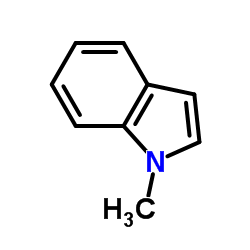 CAS#:603-76-9
CAS#:603-76-9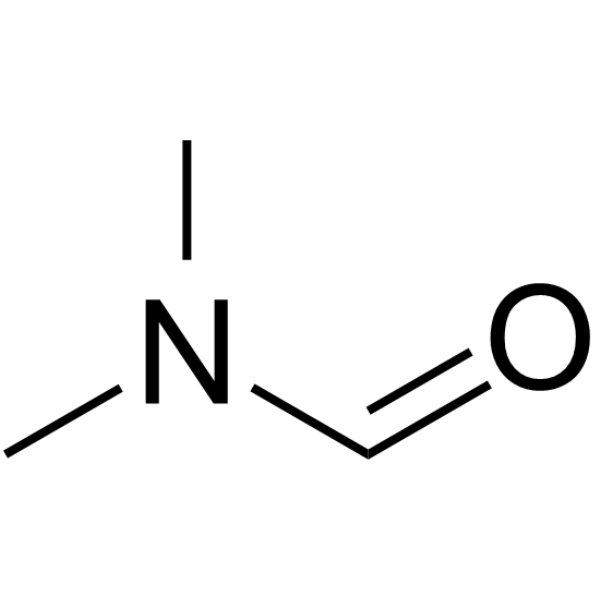 CAS#:68-12-2
CAS#:68-12-2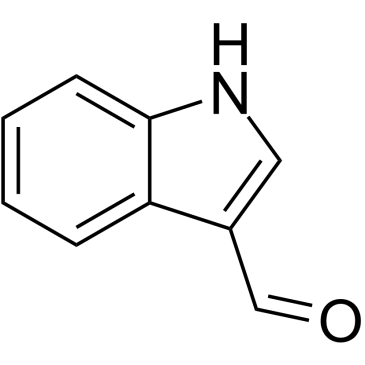 CAS#:487-89-8
CAS#:487-89-8 CAS#:74-88-4
CAS#:74-88-4![N-methyl-N-[(1-methyl-1H-indol-3-yl)methylene]methanaminium chloride Structure](https://image.chemsrc.com/caspic/002/72010-39-0.png) CAS#:72010-39-0
CAS#:72010-39-0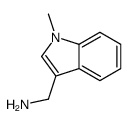 CAS#:19293-60-8
CAS#:19293-60-8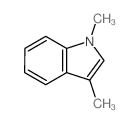 CAS#:875-30-9
CAS#:875-30-9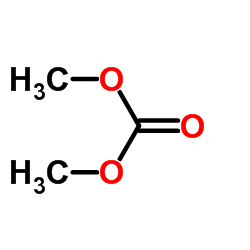 CAS#:616-38-6
CAS#:616-38-6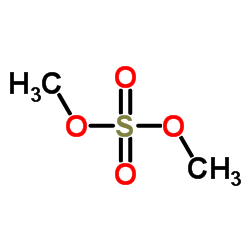 CAS#:77-78-1
CAS#:77-78-1 CAS#:38292-40-9
CAS#:38292-40-9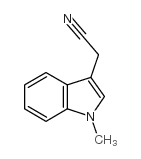 CAS#:51584-17-9
CAS#:51584-17-9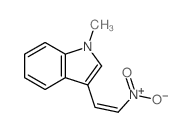 CAS#:2731-00-2
CAS#:2731-00-2 CAS#:7518-21-0
CAS#:7518-21-0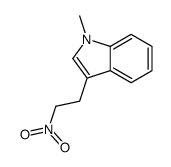 CAS#:128965-49-1
CAS#:128965-49-1![[(1-methylindol-3-yl)methylideneamino]thiourea structure](https://image.chemsrc.com/caspic/196/103907-05-7.png) CAS#:103907-05-7
CAS#:103907-05-7 CAS#:26988-72-7
CAS#:26988-72-7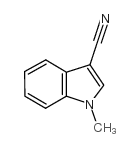 CAS#:24662-37-1
CAS#:24662-37-1
